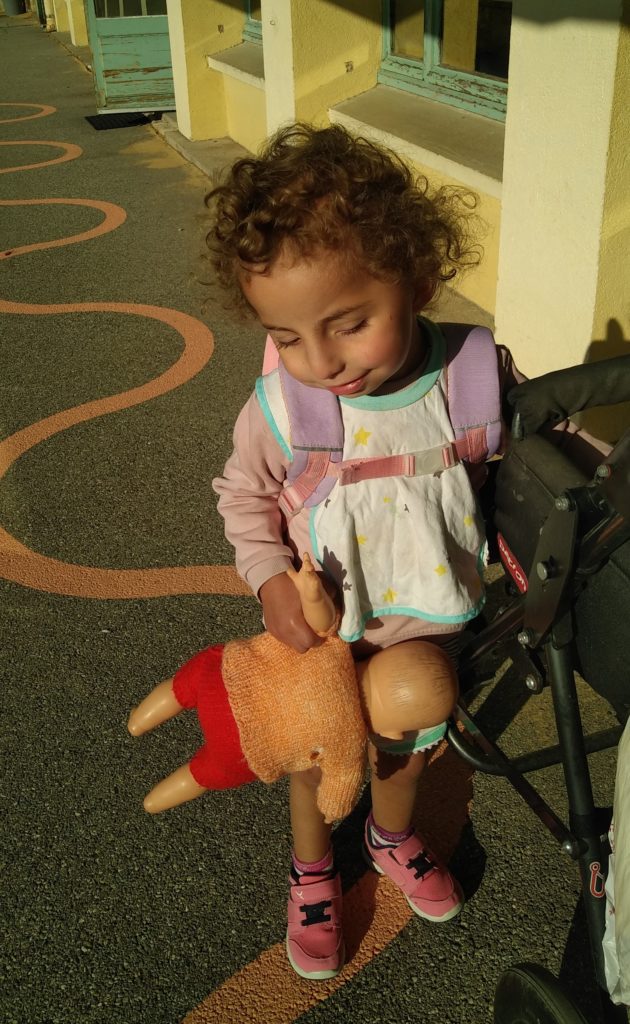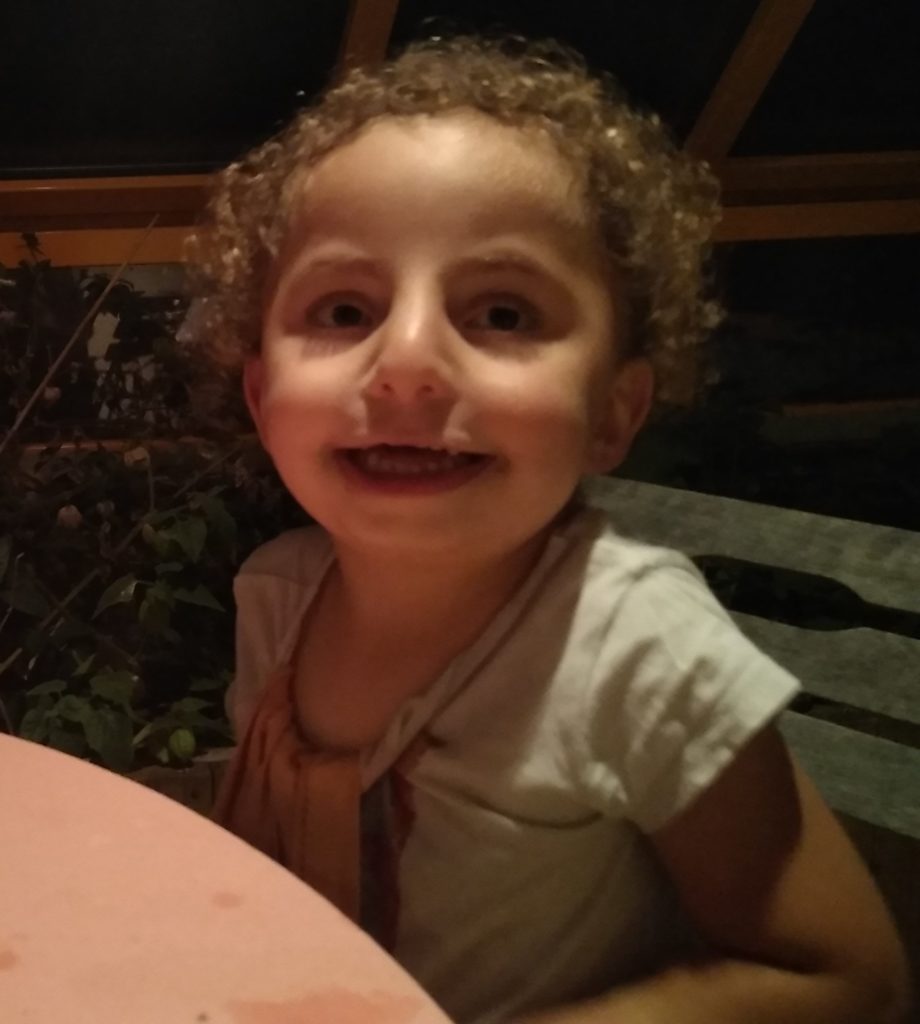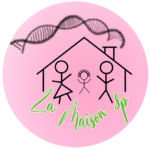Small steps, giant leaps
Last Updated 27 Septembre 2021
Small steps, giant leaps Blog entry N°1 : 24 september 2021
Disa has a new psychomotrician, the tip of the iceberg of this school year’s waves of change

A lot of change has taken place with regards to Disa’s « routine » over the past 4 months. Her in-school aide went on sick leave for nearly a month at the end of the previous school year; we decided to take a Summer break and work from home on other professional and non-profit projects which meant Disa had us around all the time; back to school was marked by a new teacher (same grade), and a new in-school aide; at home we started new habits (a daily AAC, « alternative, augmentative communication » schedule which we also relayed into the classroom); on Wednesdays when there is no school (here in France, for the elementary grades), she transitioned from daycare to day camp. For an invdupdel8p kid whose development can be conditional upon the “ritualization” of daily/weekly/monthly routines, this all represented a heavy load of adaptations to accept and to implement. We were confident in her capacities because, in reality, the percentage of our family schedule which would be considered regular is in the minority; we are always changing and re-adapting based on what life throws at us. I still had a scraping of worry that she might be confused and delayed by so many things not being the same.
Nevertheless, piece by piece, the new routine easily fell into place and Disa’s joy and confidence have disproved previous concerns that she is challenged by change. We are currently one month in to the new school year, letting all the novelties gently settle in and Disa embraces her schooldays with open arms, even being used as a reference example for other parents when they drop their younglings off in the mornings! We were riding the wave of positive change when all of a sudden we received news that the psychomotrician who was about to attack her second consecutive year of treating Disa, was going on sick leave for an indefinite period of time. The news was a bit disheartening since we were thrilled that she would benefit from the continuity of having, another member of her clinical team that did not change this year. Alas, that’s life: full of unexpected turns and surprises, for the better or for the worse.
Preparing Disa for the upcoming change
Two weeks have passed since Disa last visited our local « CAMPS » (pronounced CAMS- center for precocious socio-medical action), awaiting either the return of her previous psychomotrician, or a replacement who can welcome her on our designated therapy day, Friday. This Friday morning, Disa met “M.”, her new psychomotrician. A change to the regular routine calls for preparation in advance, explanation and representation reflected in the alternative, augmentative communication (AAC) materials which we exploit with Disa, in order to have some brief mentions of what is coming before the event, but also to expose her to as much vocabulary as possible, albeit verbally or represented in pictograms and with sign language. It sounds like a more complex procedure than it turns out to be: a few conversations spread out over the two weeks since we received the news, coupled with mentions that reinforce the subject during our Friday morning schedule overviews and, lastly, the day of our return to the CAMSP, putting the pictogram of the establishment on her daily calendar + speaking about a “new lady”, via her PODD (Pragmatic Organizational Dynamic Display), helped to drive home the message.

Admittedly, I was slightly jaded by the “new-participant” procedure that marks the beginning of all new relationships between Disa and the clinical, medical and educational players that intervene in her developmental journey. Basing myself additionally on the last experience with a new person in our local CAMSP- where the ambiance seemed ridden with a “prove what you’re capable of in 5 seconds, upon command” energy- I felt slightly less enchanted by this meeting, but still grateful that Disa was not being left behind.
We had never met M. before, other than crossing paths in the waiting room. When she arrived to welcome Disa, she immediately evoked the elephant in the room, explaining that she would be replacing G. for some time and that they were going to get to know each other and have fun playing. Disa, who was irritated by the fact that she had to wait for M., rather than barge through the door separating the waiting room and the various consulting rooms on the other side, wore her typical indifferent expression, but followed compliantly as M. led us to her room at the end of the hall…notwithstanding two U-turns just to make sure G. was surely not where she typically is to be found.
The “new place, new people” protocol, version Disa
No surprise: Disa took a few minutes to stare at the semi-new space (as mentioned previously, her last “new encounter” in the CAMSP was actually in this same consulting room, with someone else), then she addressed her attention to M. “Let’s take off our shoes, Disa. With me, the session always starts by sitting in this chair, removing our shoes and placing in them in the shoe box. Do you know how to take your shoes off?” Then, silence and patience for what seemed like a good, full minute. “Disa, do you know how to take your shoes off? Do want me to help you a little bit?” M. proceeded to slightly lift the Velcro strap, pointing at it in order to draw Disa’s attention. “Can you do the rest?” Disa proceeded to kick of the loosened shoe with her other foot, “Yay, good job!” The second shoe was a little bit harder, so M. proposed her assistance again. All the while, she was signing key words and taking her time to allow for reflection before expecting any response. She only referred her questions to me (Mom) in a last ditch effort…great!
M. invited Disa to join her on the matted zone where they could explore the various toys she had pre-selected, but Disa would be the one to decide when she was ready, as usual. First, she executed her personal “new place, new person” protocol by touring the perimeter of the matted “work” zone by tapping and “Ha!”-ing as she explored the limits of this new space, as if to record it in her brain and her body. To my delighted surprise, it didn’t take Disa very long before she was okay to get further involved. In fact, she signed, “play”, in order to initiate the session with M. I stepped in just to let M. know that it was Disa’s version of this sign. Her first choice: the big ball. “Do you want to play with the ball, Disa?” a question accompanied, again, by signs. Disa responded with an affirmative tone and high-pitched, “HA!”, her “Yes!” “My turn! Your turn!”, M. vocalized out loud. She rolled the ball to Disa and solicited her to roll it back. Patient silence again, while awaiting Disa’s response. Disa rolled it back! Back and forth, “my turn, your turn”, Disa sat down and became comfortable, started giggling loudly and opening up to M. The last time I saw Disa become comfortable so quickly with a new person in her extra-familial entourage was in 2019 when she first met A., who went on to become her personal aide in school, at daycare and now at day camp.
When AAC permits two strangers to exchange independently during a first encounter

I observed Disa making eye contact with M., inviting her to change activity to the foam tunnel, taking turns with inventing silly games involving ball, tunnel and staircase combinations; tapping her hands to sign “again/more”; following instructions when announced (come here Disa, let’s do ___, time to put away, sit down to read a book, etc). At one point, towards the end of their session, M. was directing Disa through her departure routine, which involved calming down the excitement by sitting in a designated chair in order to put back on her shoes, read a short book together, have one last little moment of interaction involving a light game of “what is my hand doing?” “Caressing your arms, pointing to your knee, pressing on your shoulders,” to cite a few examples. In fact, I suspect this is a technique of the “Dynamique Naturelle de la Parole” (DNP, natural dynamic of speech, which associates syllables to specific touches).
Something I particularly appreciated was a moment during this “closing routine” when Disa attempted to get up and wander around again, to re-start the play, and M. firmly, yet caringly, enforced “No, Disa, we’ve finished playing, now we are reading this book and soon we will say good-bye” and she gently re-sat her in the chair while maintaining eye contact and ensuring that Disa felt safe, rather than scared or vexed. Disa accepted and re-focused her attention on finishing the story…this type of response from M. shows experience and care for instilling a certain sense of structure, in contrast to the free play she allowed Disa earlier, all the while making sure she demonstrated that she empathized and respected Disa’s will, but that this was not an appropriate moment for Disa to impose her wishes. I chimed in and noted that I am trying to develop the sense of structure in time, as well, with her school.
With that, the book was finished and the session time was up. “Good-bye Disa, see you next Friday!” Disa, shoed-up and satisfied with the last 45 minutes with M., went to the door and instinctively walked to the end of the hall to the exit door, no distractions, no attempts to return to the room to continue the play. Between her ease of adapting to the change of a new person in a known location, her ability to accept developing a rapport with someone who willingly gave cues to demonstrate she was a person of confidence and security, Disa’s independence in communicating directly with this stranger by utilizing the tools we have provided her (signing, tapping, intonations of voice, in this situation) and her ability to remain a 4 and a half year old girl who knows what she likes and doesn’t like, in terms of activities, and making sure she has the fun that she anticipates from her visits to the CAMSP, Disa proved she has assimilated and mastered every ritual and routine we have worked into her and our lives, understands so much of what she receives in verbal communication and makes enormous efforts to employ the various modes of communication she is proposed in order to transmit her message, all the while maintaining an element of flexibility to adapt to the unexpected. She really is an amazing (and cheeky) little girl.

#invdupdel8p #lamaison8p #duplication8p #deletion8p #raregeneticdisorder #maladiegénétique #chromosome8 #AAC #CAA #alternativeaugmentativecommunication #communicationalternativeaugmentée
Devenir Membre de La Maison 8p
Vous avez envie de :
apporter vos expériences, participer à nos actions et nos projets,
bénéficiez de nos ressources et supports?
Grâce à Yapla, vous pouvez régler votre cotisation annuelle par CB directement en ligne et
nous retourner les statuts signé par e-mail.
Faire un don
Vous avez envie de soutenir nos efforts, sans devenir Membre?
Vous pouvez effectuer un don via Yapla, plateforme sécurisé en ligne, avec quelques clics.
Choisissez le montant, utilisez votre CB; sans contrepartie, ni condition,
vous contribuez à une bonne cause. Merci beaucoup!
Hébergement par Team Helper Hosting

Love this little story about Disa.